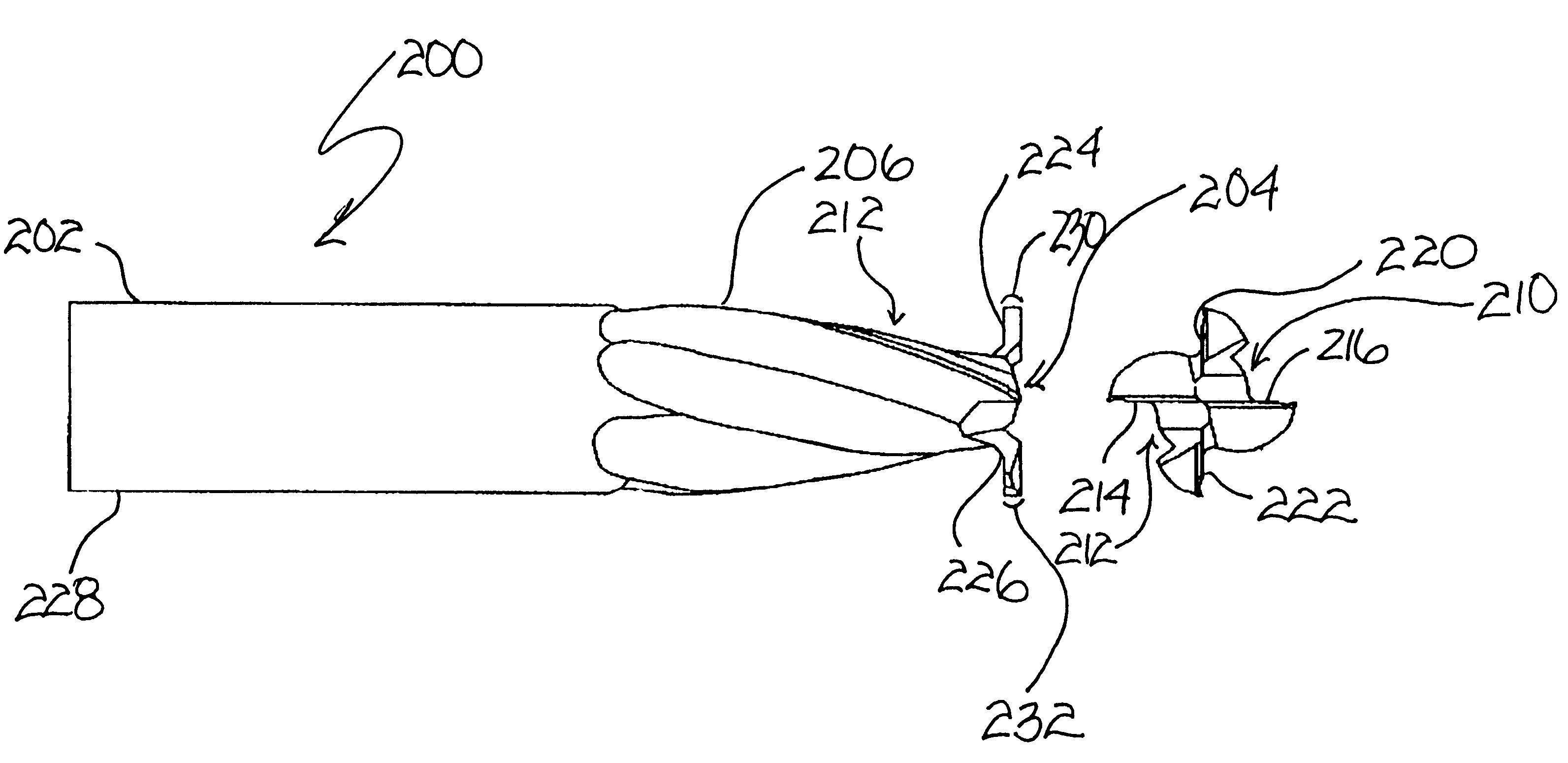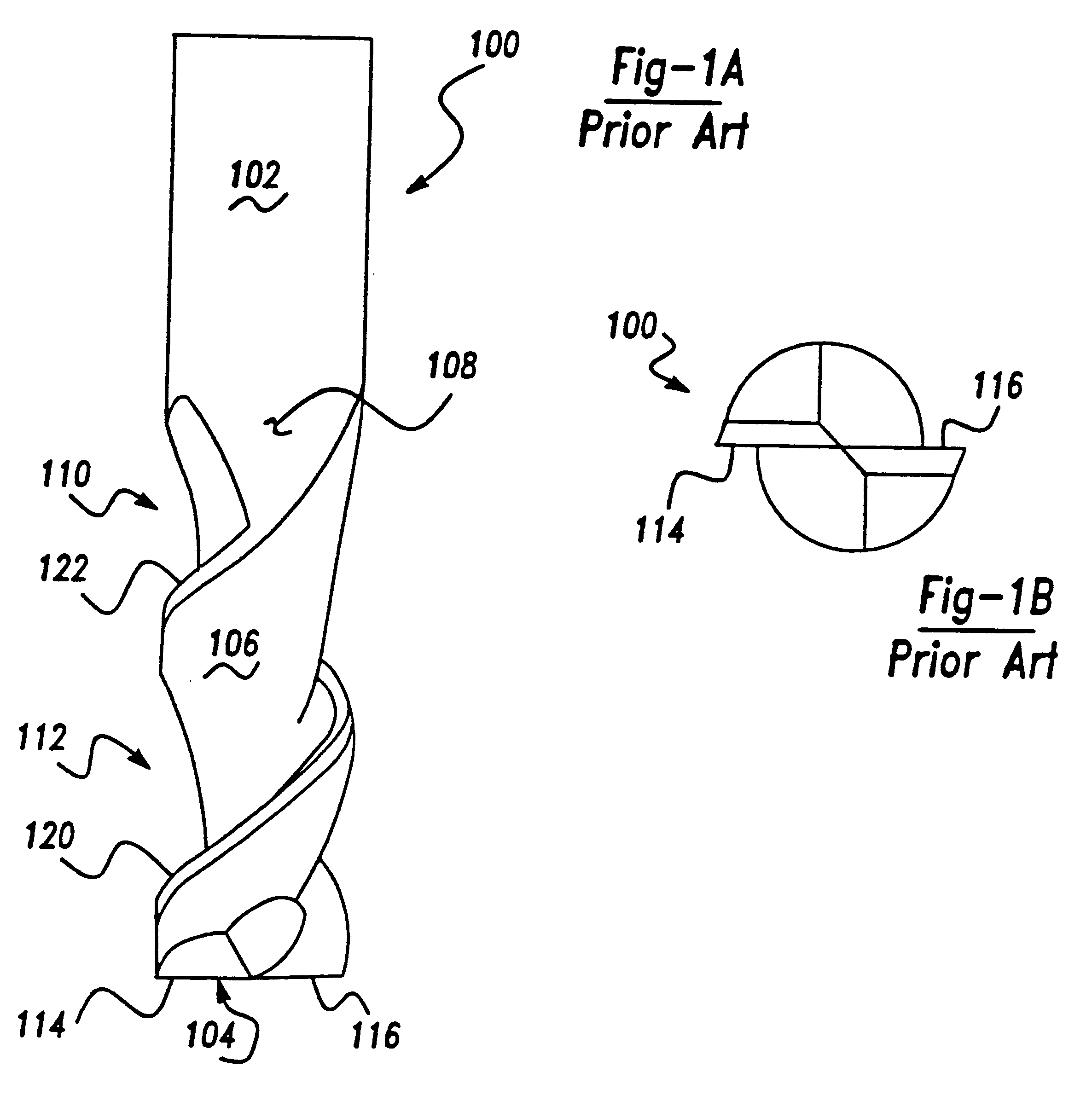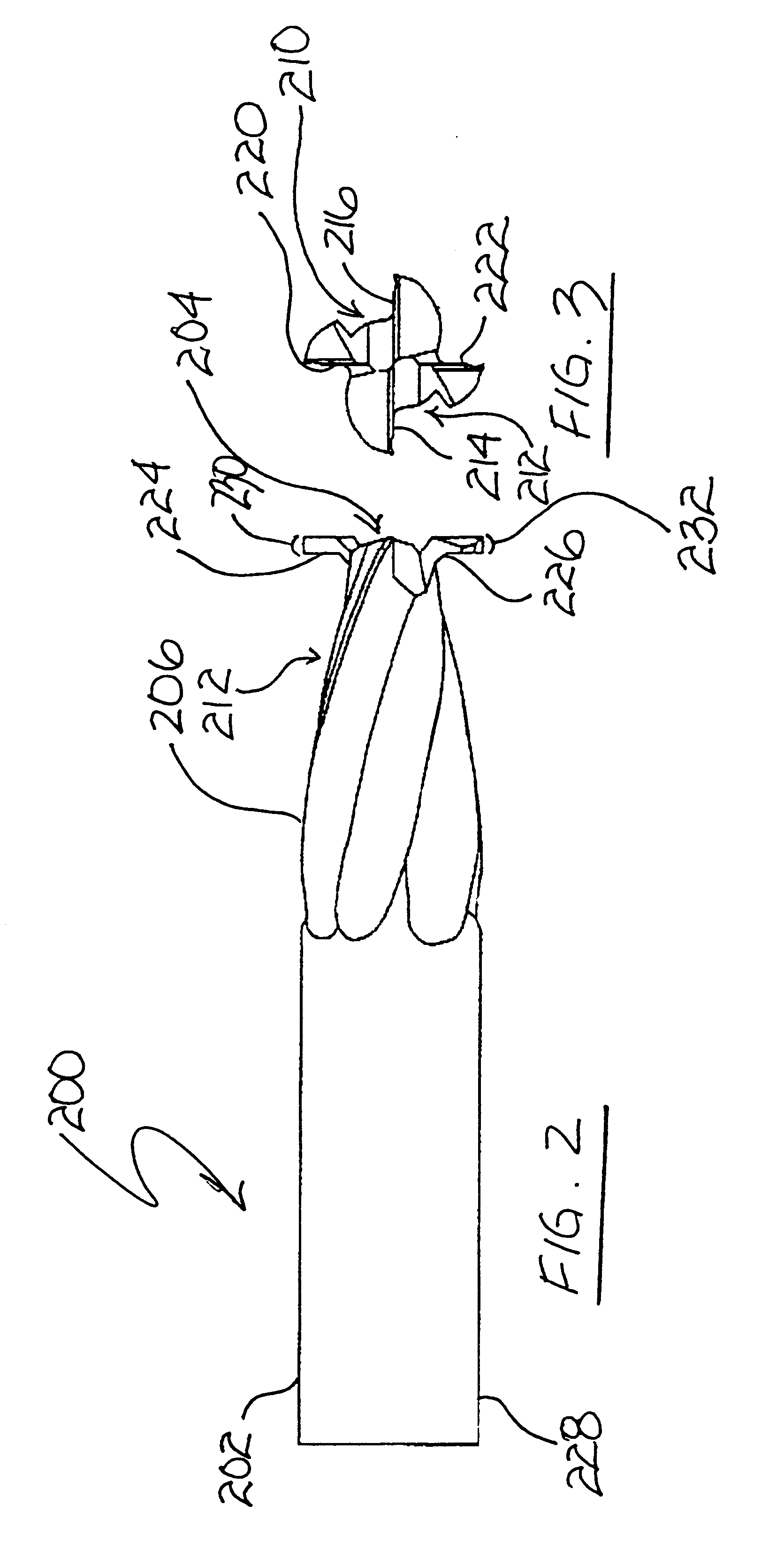End-mill tool with multiple cutting edges
a technology of end-milling tools and workpieces, which is applied in the direction of wood boring tools, shaping cutters, manufacturing tools, etc., can solve the problems of inconvenient for a particular application, weakening the tool, and affecting the quality of the end-milling tool
- Summary
- Abstract
- Description
- Claims
- Application Information
AI Technical Summary
Problems solved by technology
Method used
Image
Examples
Embodiment Construction
The present invention will now be described more fully hereinafter with reference to the accompanying drawings in which preferred embodiments are shown. It will be appreciated, however, that the present invention may be embodied in many other forms and should not be construed as limited to the embodiments set forth herein. For purposes of clarity, the same reference numerals are used throughout the drawings to consistently identify identical or equivalent element. In the discussion that follows, it will be understood that no priority of function is meant to be attributed to the terms "first" and "second". In this regard, these terms are used for identification purposes only.
Referring generally to FIGS. 2 through 3 of the drawings, an end-mill tool constructed in accordance with the first preferred embodiment is identified with reference numeral 200. FIG. 2 illustrates a side view of the end-mill 200 of the present invention. FIG. 3 illustrates an end view of the end-mill of FIG. 2.
T...
PUM
| Property | Measurement | Unit |
|---|---|---|
| angle | aaaaa | aaaaa |
| angle | aaaaa | aaaaa |
| helix angle | aaaaa | aaaaa |
Abstract
Description
Claims
Application Information
 Login to View More
Login to View More - R&D
- Intellectual Property
- Life Sciences
- Materials
- Tech Scout
- Unparalleled Data Quality
- Higher Quality Content
- 60% Fewer Hallucinations
Browse by: Latest US Patents, China's latest patents, Technical Efficacy Thesaurus, Application Domain, Technology Topic, Popular Technical Reports.
© 2025 PatSnap. All rights reserved.Legal|Privacy policy|Modern Slavery Act Transparency Statement|Sitemap|About US| Contact US: help@patsnap.com



